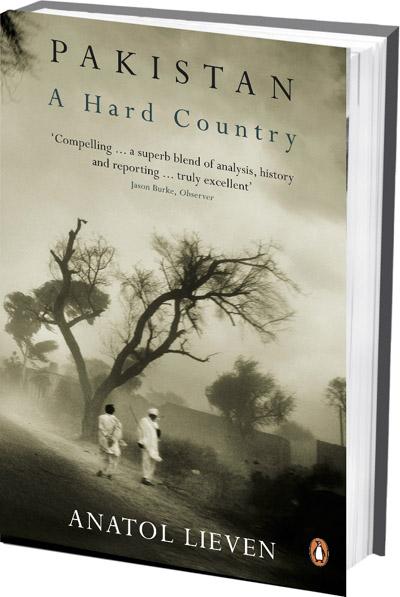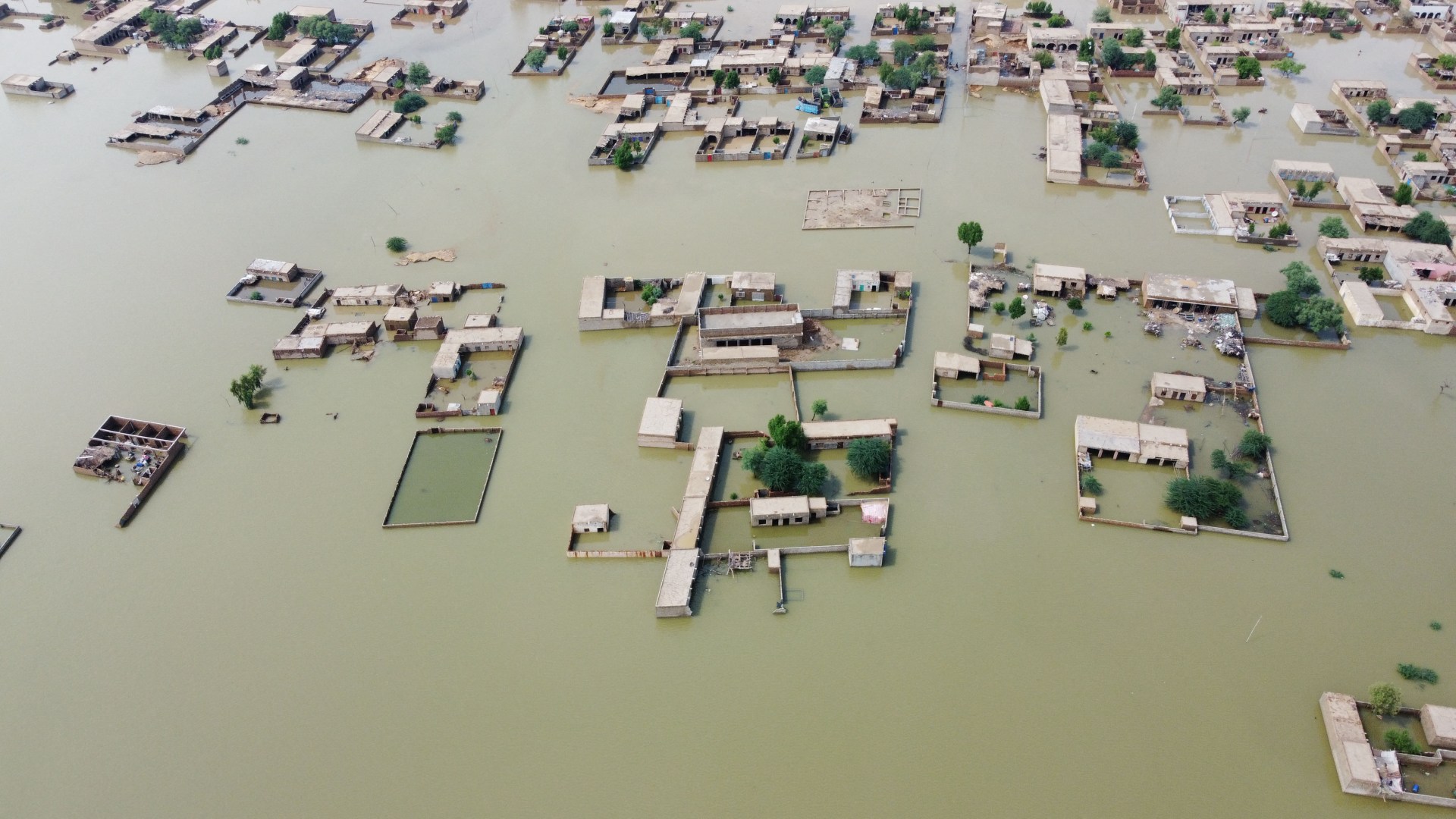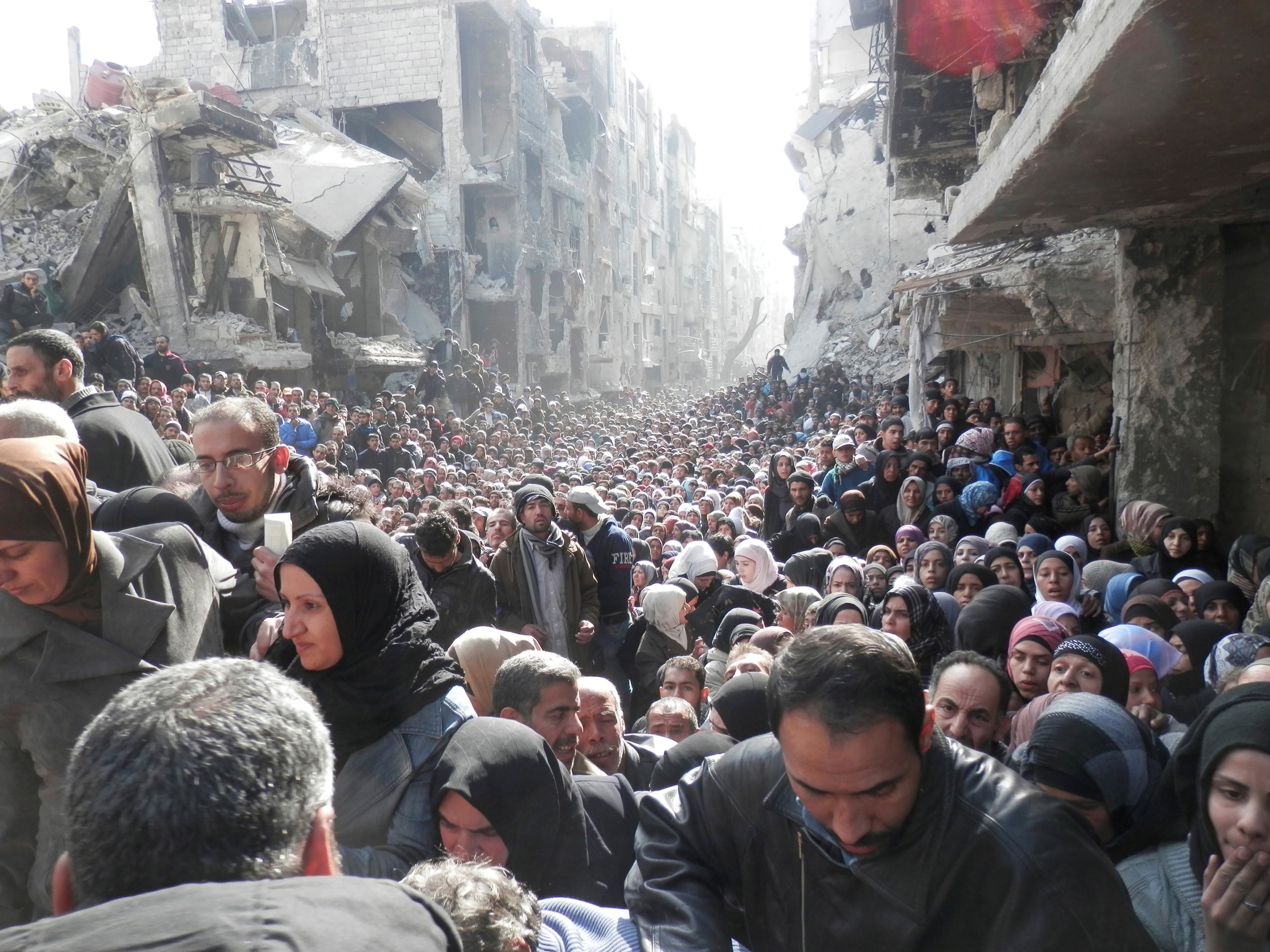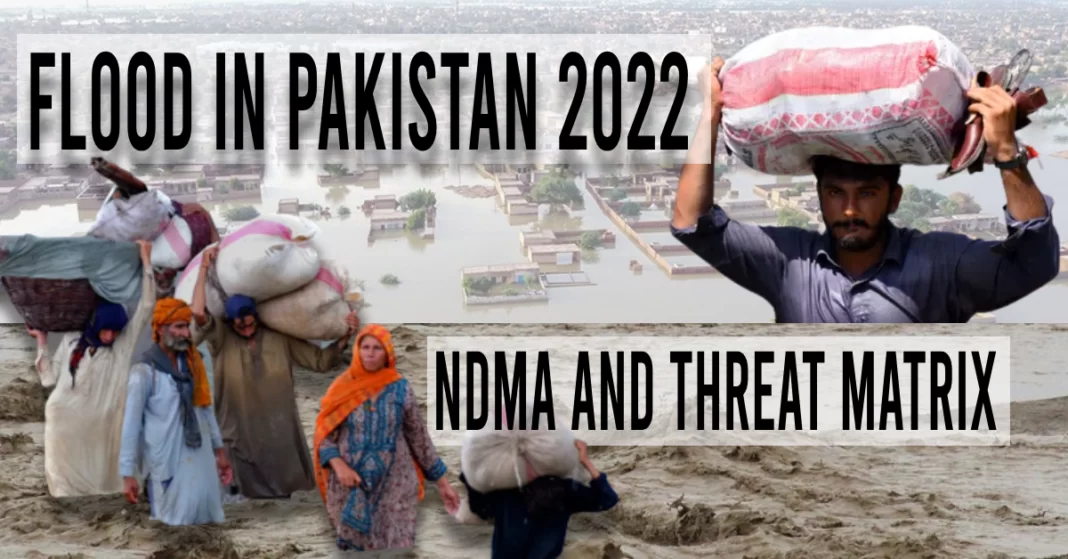Introduction
In his book, Pakistan: “A Hard Country,” Anatol Lieven wrote, “If the US or India, or both together, invade Pakistan & thereby precipitate its disintegration, the likelihood is that the country will hold together, and if it eventually collapses, it will not be Islamist extremism but climate change that finishes it off.” Pakistan’s National Disaster Management Authority (NDMA) has similar feelings about this country.

Pakistan has designed its security architecture to counter India’s influence. It also tends to exercise influence in Afghanistan. But the current wave of floods is a wake-up call for the country, that it needs to add climate change to its threat matrix.
What does the NDMA say?
Due to climate change, extreme weather is becoming common in Pakistan. Pakistan’s already worn-out food and water security are now catastrophically vulnerable due to heat waves, floods, and droughts, says the National Disaster Management Authority (NDMA). The irony of the matter lies in that Pakistan is one of the world’s lowest carbon emitter countries, yet it is among the top ten most vulnerable nations to climate change.
Almost every year, Pakistan breaks its record for being one of the worst-affected countries by climate change. Pakistan was named one of the top 23 nations battling drought over the last two years by the United Nations in May. Between 1998 and 2018, the country is projected to have lost about 10,000 lives due to climate-related catastrophes, with damages totaling around $4 billion due to 173 extreme weather events says the National Disaster Management Authority (NDMA).

For Pakistan, climate change has aggravated the latent threats of poverty, inter-provincial tussles, resource scarcity, and population displacement. All these threats combine to challenge the national security of Pakistan. Since 2013, Pakistan has seen a steady decline in terror attacks. Over the last five years, the country has remained relatively peaceful. However, Pakistan’s progress in terms of security is at the mercy of climate change.
Pakistan’s rural population migrates to urban and large cities faster than ever. The irregular weather patterns have affected agricultural yields significantly, thus causing a dramatic rise in migration to metropolitan areas of the country. Karachi is already among the world’s ten least livable cities, while Lahore’s air quality drops to a new low every year, and it may also face severe water scarcity in the future. These deteriorating living standards ultimately lead to the spread of diseases and a surge in the crime rate.
Pakistan and Syria
Due to scarce resources, social identities based on gender, religion, ethnicity, and socioeconomic background have become more noticeable. These identities may exacerbate violence, terrorism, dissident movements, political tensions, and organized crimes. This nexus of internal conflicts will eventually threaten Pakistan’s national security.
Generally, climate change has impacted the agricultural sector in South Asia and particularly in Pakistan. Agriculture contributes 21 percent to Pakistan’s GDP, but the techniques used are inefficient and outdated. The extremes of floods and droughts have decreased yields sharply, leading to food insecurity.
The Syrian civil war provides an excellent example to assess the implications of food insecurity and migration to urban areas. According to a World Food Programme report, 12 million Syrians, or 55 percent of the total population, are food insecure. In the first half of 2022, Syrians faced a 45 percent hike in food prices, which adds to the tension created by a 500 percent hike in the last two years.

A Threat Multiplier
Whether it was the United Nations Security Council or the United States Department of Defense, both declared climate change a “threat multiplier.” In the case of India and Pakistan, both countries are equally vulnerable to climate change. However, their cooperation is minimal. Pakistan’s dispute with India over water resources was hijacked. Kashmir conflict and counterterrorism. Pakistan has always raised its voice against the suppression of Kashmiris, while India always blames Pakistan for terror activities in IOJK. But both countries are not ready to address the more significant threat that can annihilate. Thus, scholars have an excellent rationale for believing climate change will only destabilize the South Asian region.
To put the cherry on top, Pakistan lacks any institutional setup to combat the multifaceted and complex issue of climate change. Pakistan’s new National Security Policy (NSP) did recognize the long-denied threat of climate change. It also emphasized climate action and climate adaptation. (colburnschool.edu) But even this blueprint failed to address the institutional gaps in the system. Even academia has yet to recognize the menace of environmental degradation. Their focus is still on security challenges posed by state and non-state actors.
Conclusion
At last, if we talk about the way forward, Pakistan needs to recognize climate change as a security threat. And Pakistan needs to add it to the assessment criteria of the threat matrix. It needs a robust institutional setup to adapt climate-action strategies. Across the urban development, agriculture, poverty alleviation, crime, resource scarcity, and diplomacy. Regarding the institutional setup, the NDMA also needs a revamp to avoid such disasters in the future. But most importantly, academia, policymakers, the media, civil society, and the public should take the threat seriously.
Muhammad Saad is a Freelance Article, Blog, and Copywriter. He provides his services on Fiverr under the username @saadiqbal599.







